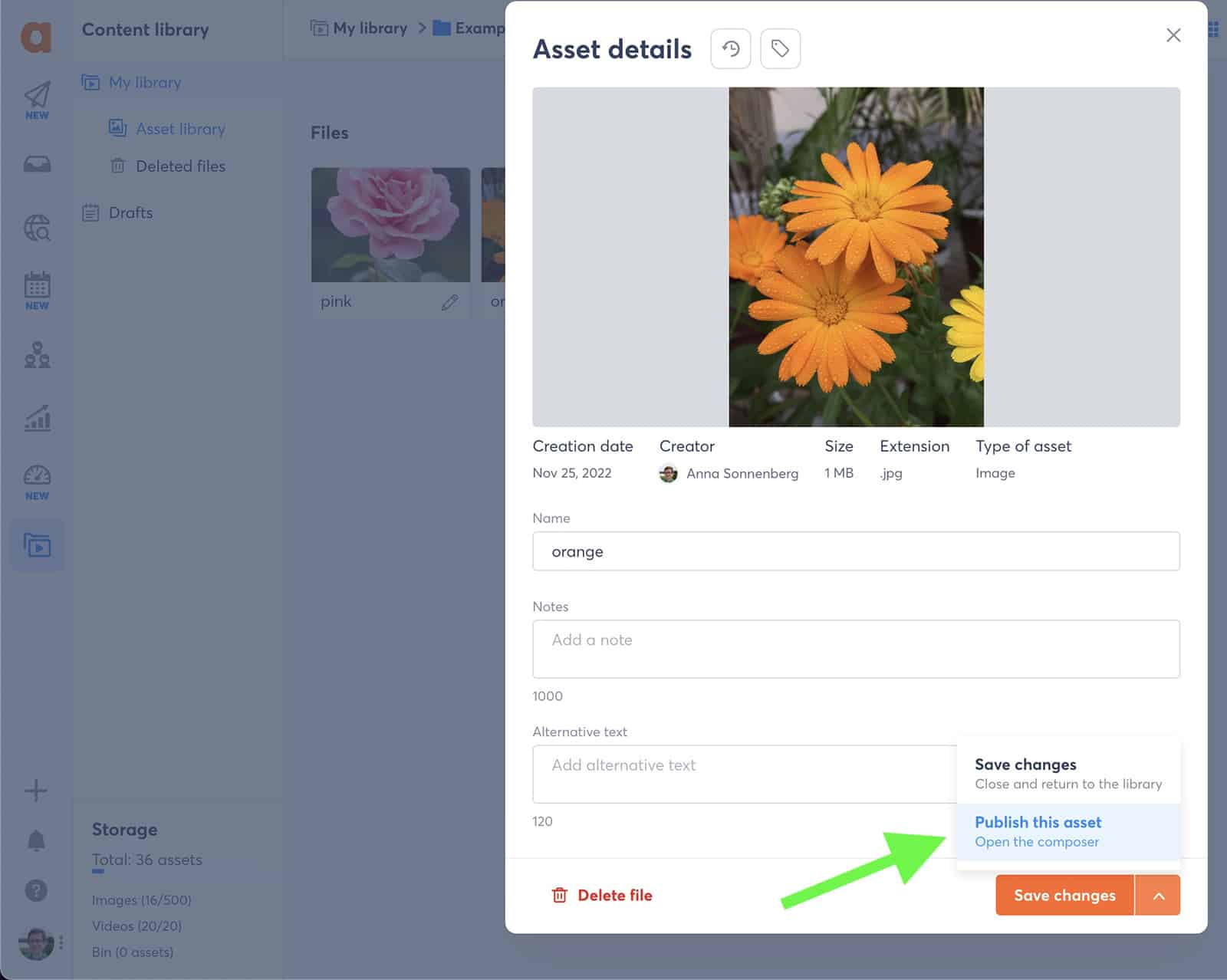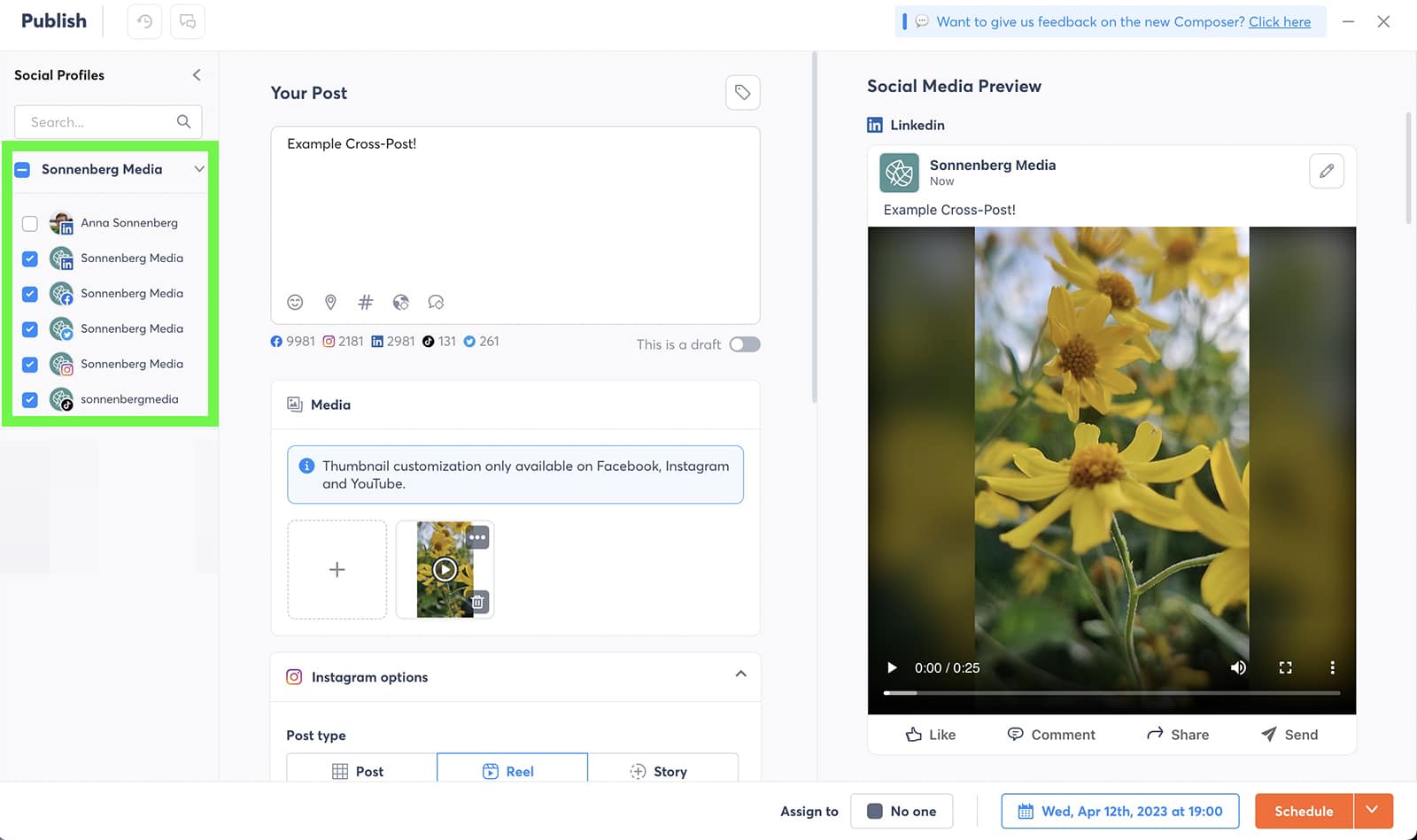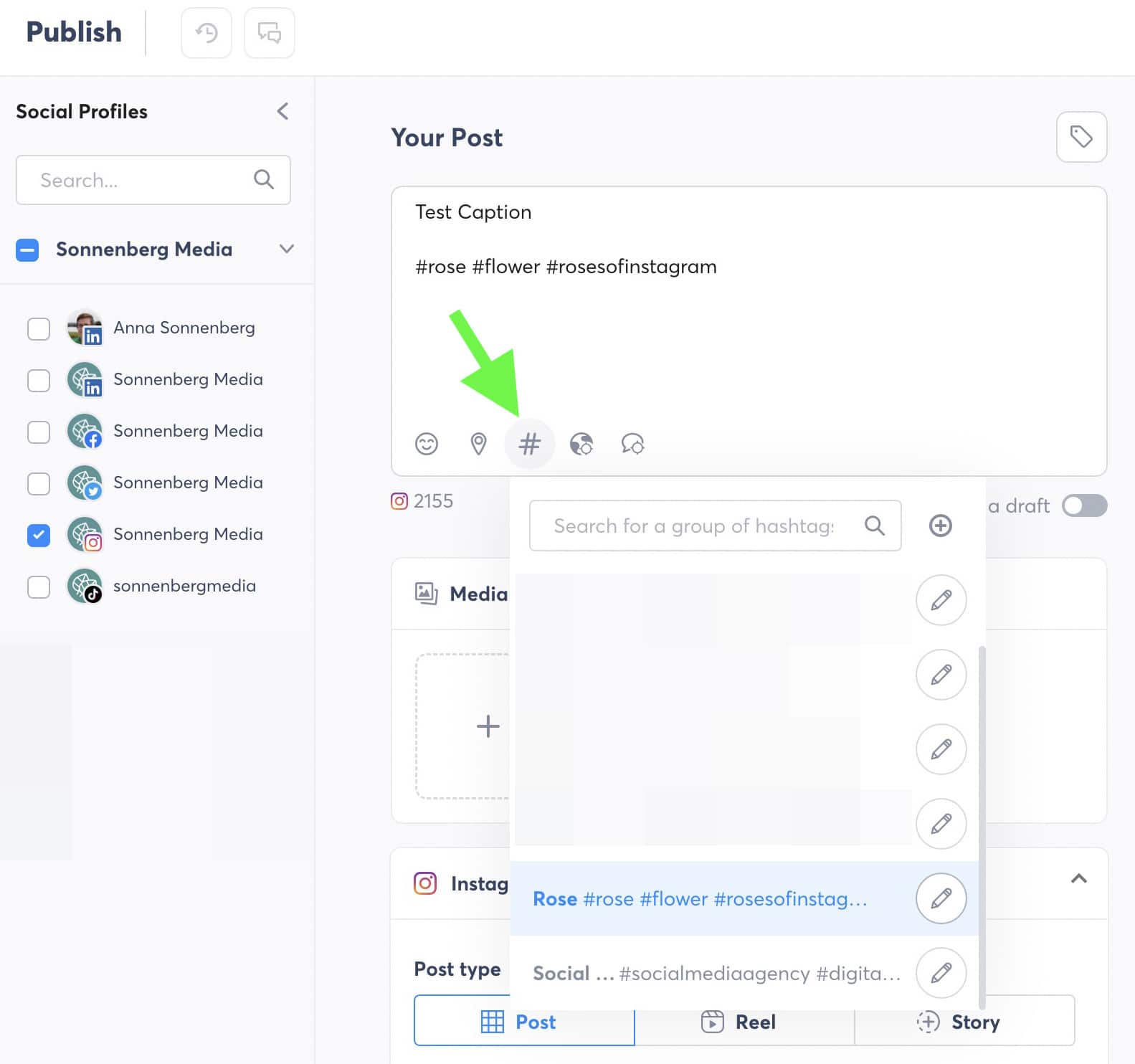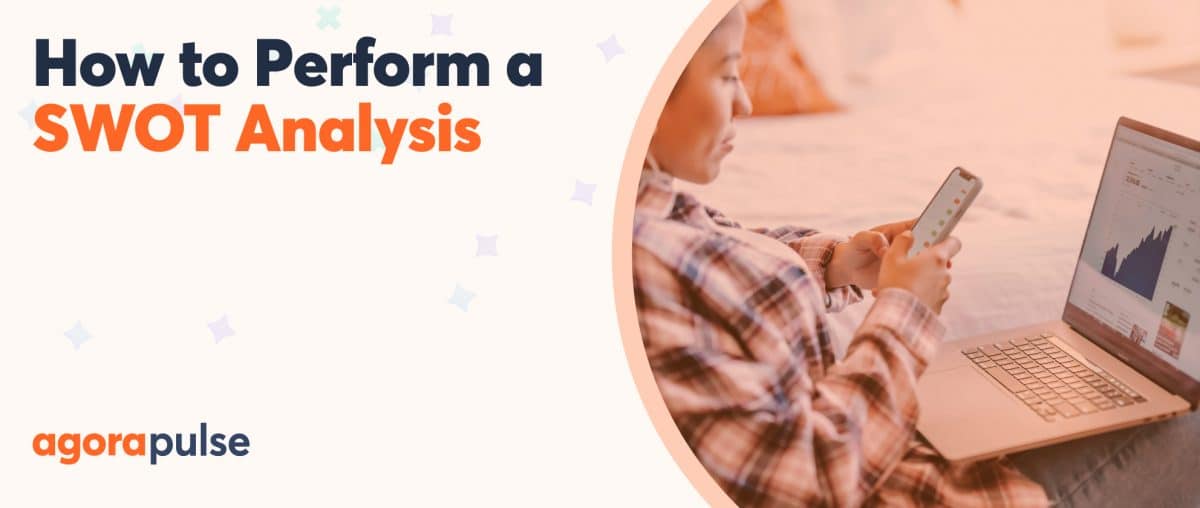Short on time? You need a social media workflow that helps you work faster, so you can make real progress toward marketing goals. Whether you work with a marketing team or you manage agency clients, a social media workflow lets you handle tasks efficiently as you collaborate with colleagues.
With a solid workflow, you can check tasks off your list, avoid constant distractions, and optimize your results.
(And sign up for a free trial with Agorapulse and see how you can start saving time and money with Agorapulse.)
Tools to Optimize Your Social Media Workflow
To develop a workflow that genuinely saves your team time and money, you need a few tools. Here are the apps and processes that make your social media team tick like clockwork.
Social media strategy
If you’re creating social media content without a larger plan in mind, you’re going to waste a ton of time and money. Before you begin designing or scheduling content, work with your team to develop a social media strategy.
Does a successful strategy take time to perfect? Absolutely. But by spending time on creating a strategy at the beginning of the process, you can save time when producing content later—and ensure your efforts make a bigger impact.
To create a social media strategy, start by identifying the objectives that your company or client needs to achieve in the next three to six months. (For example, objectives could include selling products or increasing brand awareness. Then set SMART goals that are specific, measurable, attainable, relevant, and timely. Maybe you want to reach a certain number of people in 90 days to boost brand awareness.) Keep in mind your strategy and goals may differ between social channels.
Social media dashboard
When managing social media for clients, the biggest cause of wasted time is hopping between channels or accounts.
Managing social media with native apps requires endless refreshing and keeping way too many tabs open.
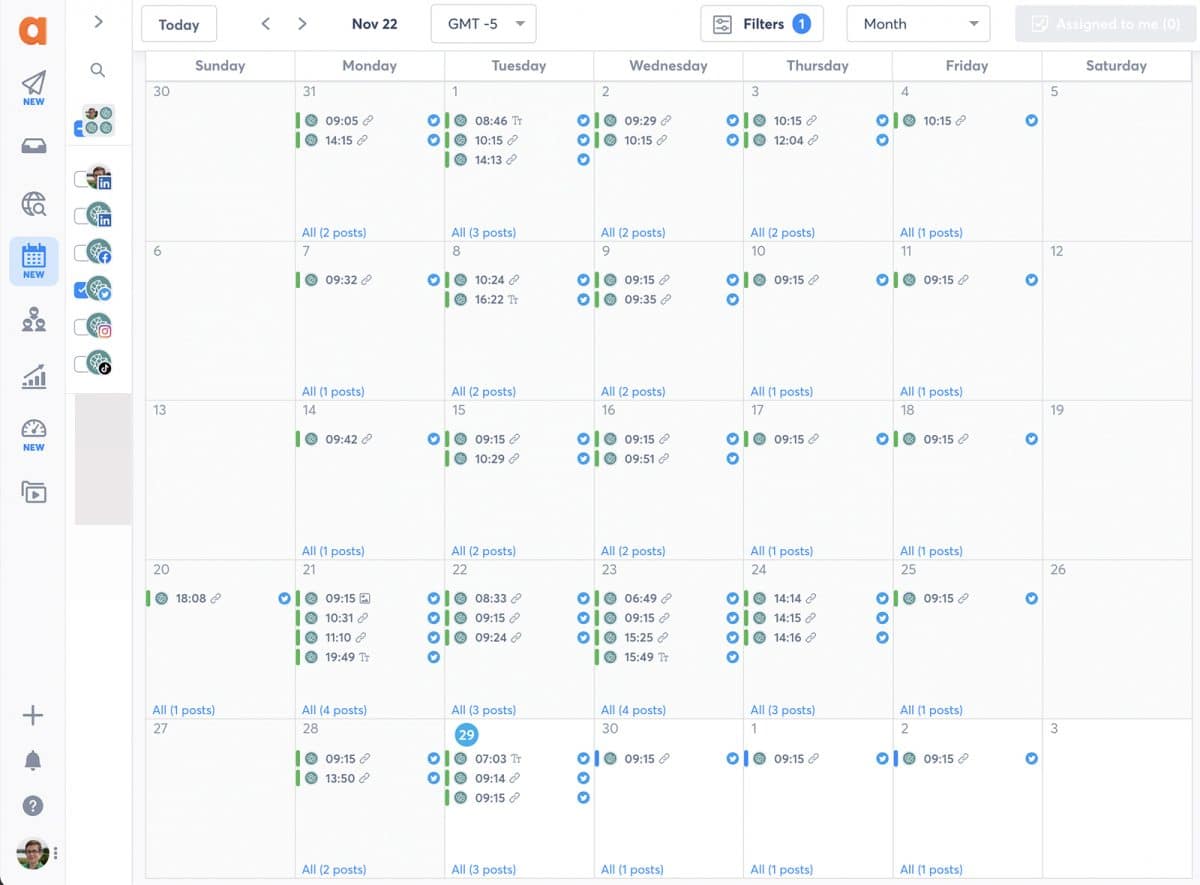
Example of Agorapulse’s calendar to help social media workflow
That’s why it’s essential to use a social media dashboard. Solutions like Agorapulse let you handle everything from publishing content and moderating engagement to social listening and campaign reporting.
Since you can link all clients’ social profiles to your Agorapulse dashboard, you can manage everything from a single tab—with no refreshing necessary. You can also configure the notifications you receive to minimize distractions and stay focused.
Design app
Whether your company or clients have fully embraced video or you’re creating a mix of content types, you need a design app to streamline production.
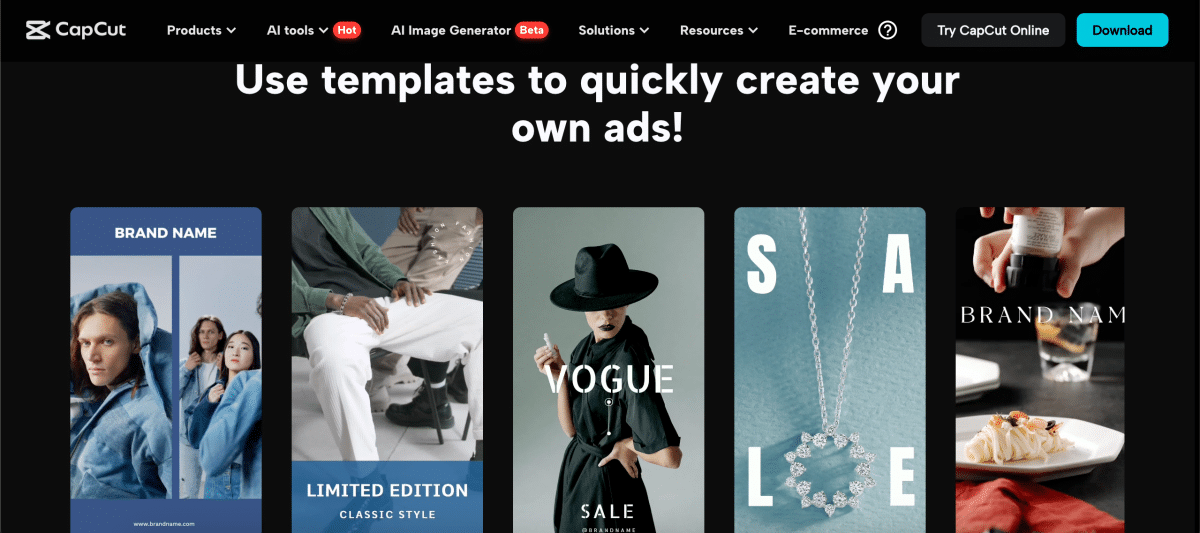
CapCut has templates you can use for ads and stories on all socials.
With the right app, you can access editing tools, keep styles consistent, and resize content as necessary.
For short-form video, CapCut offers the best range of filters and effects. Plus, you can save time by exporting drafts from CapCut and repurposing them on TikTok, Instagram, YouTube, and other social channels.
For a mix of video and image-based content, Canva has the best options for editing footage and adding text and other effects.
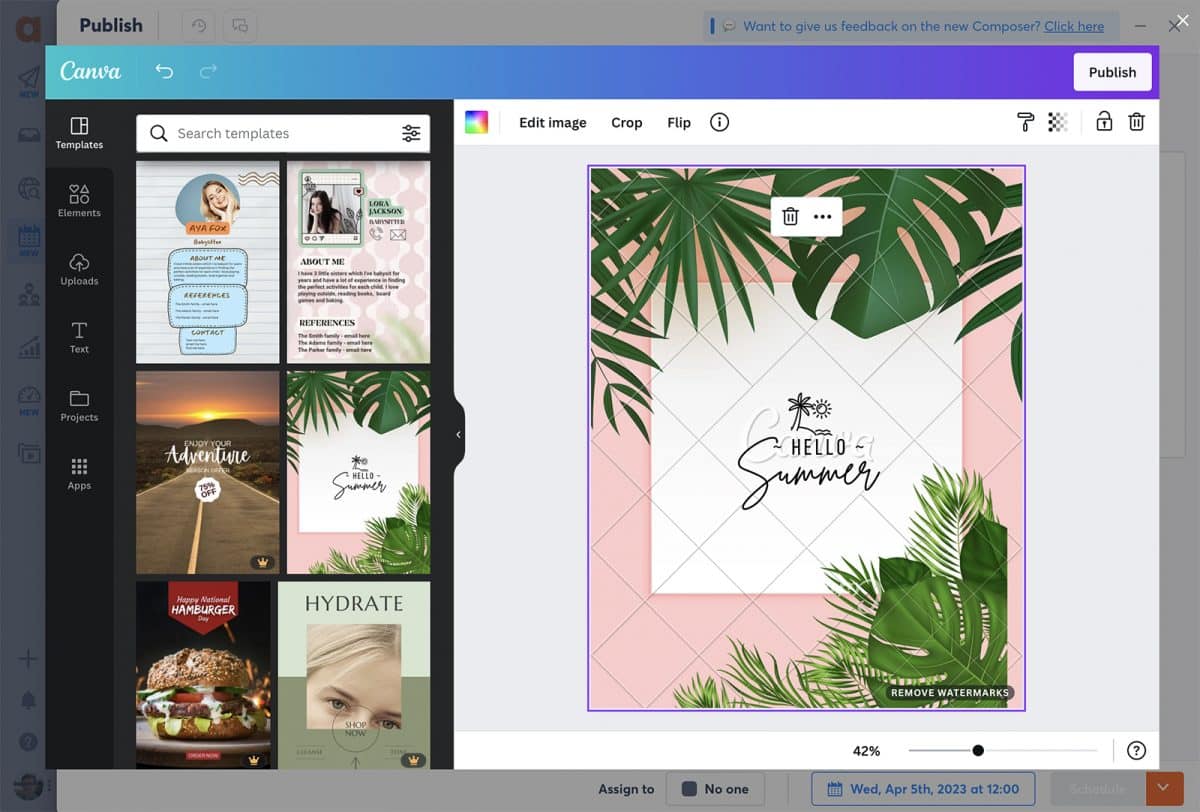
Graphic design has never been easier with Canva
(Canva also integrates directly with Agorapulse, which means you can add content to social media posts efficiently.)

10 Steps to Create an Efficient Social Media Workflow
Now that you have the right apps and processes in your toolkit, you can create and implement a more effective workflow.
Here are the 10 steps to handle social media management efficiently.
1. Draft a content calendar
A social media strategy isn’t the same thing as a content calendar. But the former can help you save time when developing the latter.
In other words, you can use your strategy to plan the type of content you’ll create.
For example, say your goal is driving more sales during a major shopping event. To maximize sales, you may want to tease your special offers in advance. Once you launch the offers, you may want to support them with product-focused content and ecommerce links.

Create a new note in your social media workflow.
Agorapulse can plan your social media content calendar because it can keep track of both ideas and drafts. To add an idea, you can click to create a new note on your Agorapulse calendar. You can also add links and jot down ideas, and you can color code it to help with planning.
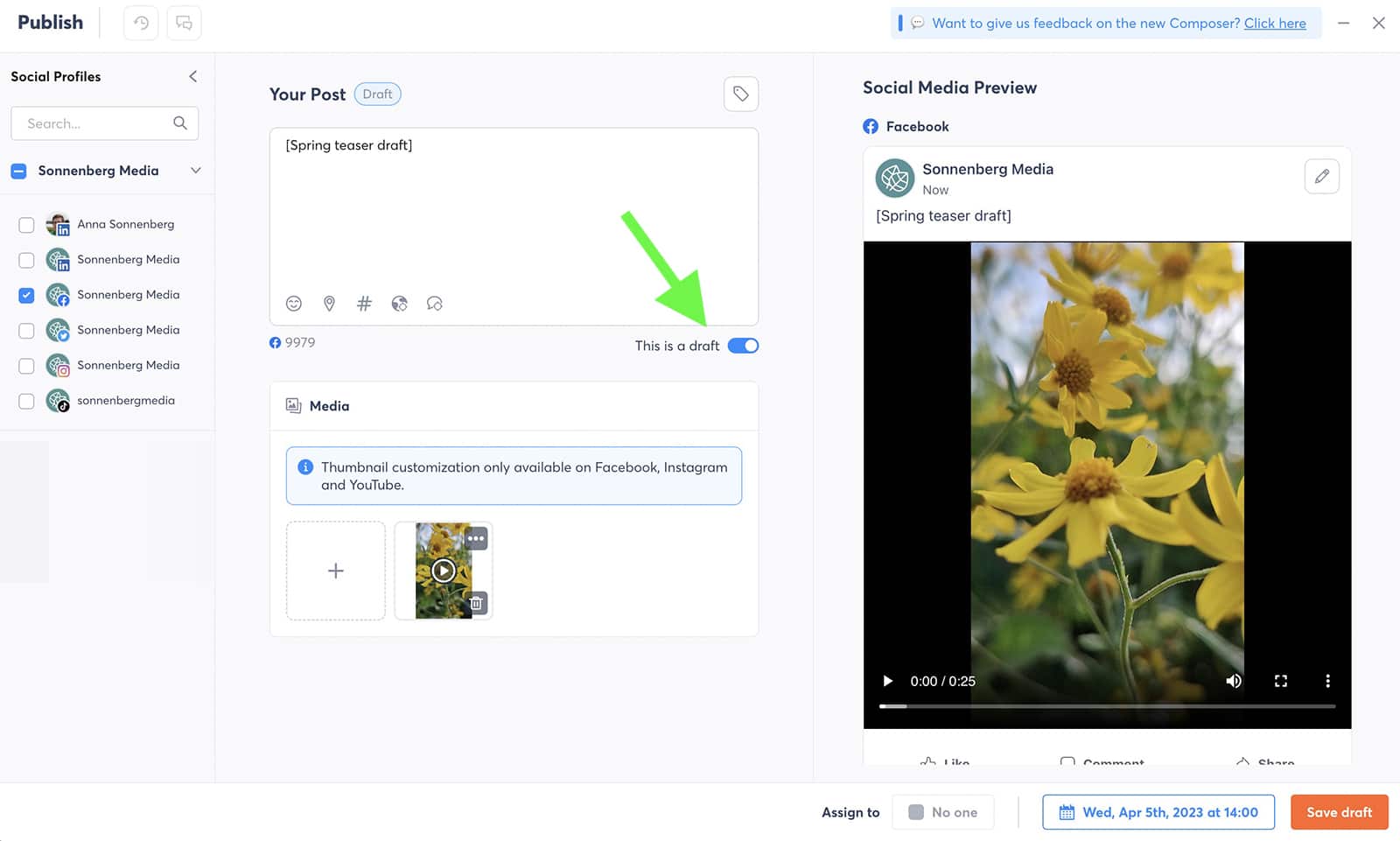
Example of drafting a post in a social media workflow
If your ideas are more fully formed, create draft posts on your Agorapulse calendar. It’s as easy as opening the publishing composer and switching on the This is a draft toggle. Then you can draft the post, choose the social profiles, and save it for later.
2. Know your brand’s audience
The quickest ways to create and publish social media content include using templates and sharing generic content. But both of these tactics are likely to result in low engagement—and they probably won’t drive many clicks or sales either. To engage your followers, get them to buy, and encourage them to stay loyal to your brand, you need content that resonates.
In other words, you need to produce content that speaks to your audience—not to just any social media user. Does your marketing team already have a buyer persona that describes the organization’s ideal customer? If so, you can use it to guide your social media content.
If not, take some time to create one that your entire team can reference. A great buyer persona usually includes details like customer:
- Demographics, such as age, gender, and location
- Interests that can add more context to social media posts
- Problems that your products and services can solve
- Goals that your brand can help them achieve
If the brand is geared toward more than one ideal customer, you can create multiple buyer personas. Then use them to guide your content—and make sure it speaks to the audience’s interests, problems, and goals.
3. Create content in batches
By now you have a buyer persona, a social media strategy, and a content calendar. Next, use all three to begin creating branded content—including creatives and captions. We recommend storyboarding content and then using mobile apps to create and edit.
It’s much more efficient to produce content in batches than to create one post at a time or to keep switching between tasks. In most cases, aim to create content for a whole month or for an entire campaign at once.

Asset library for your social media workflow
To streamline your social media content workflow, try storing all creatives in a central location. The Agorapulse asset library helps organize content, as it’s easy for your team to access. Plus, you can keep everything organized by creating separate folders for campaigns or clients.
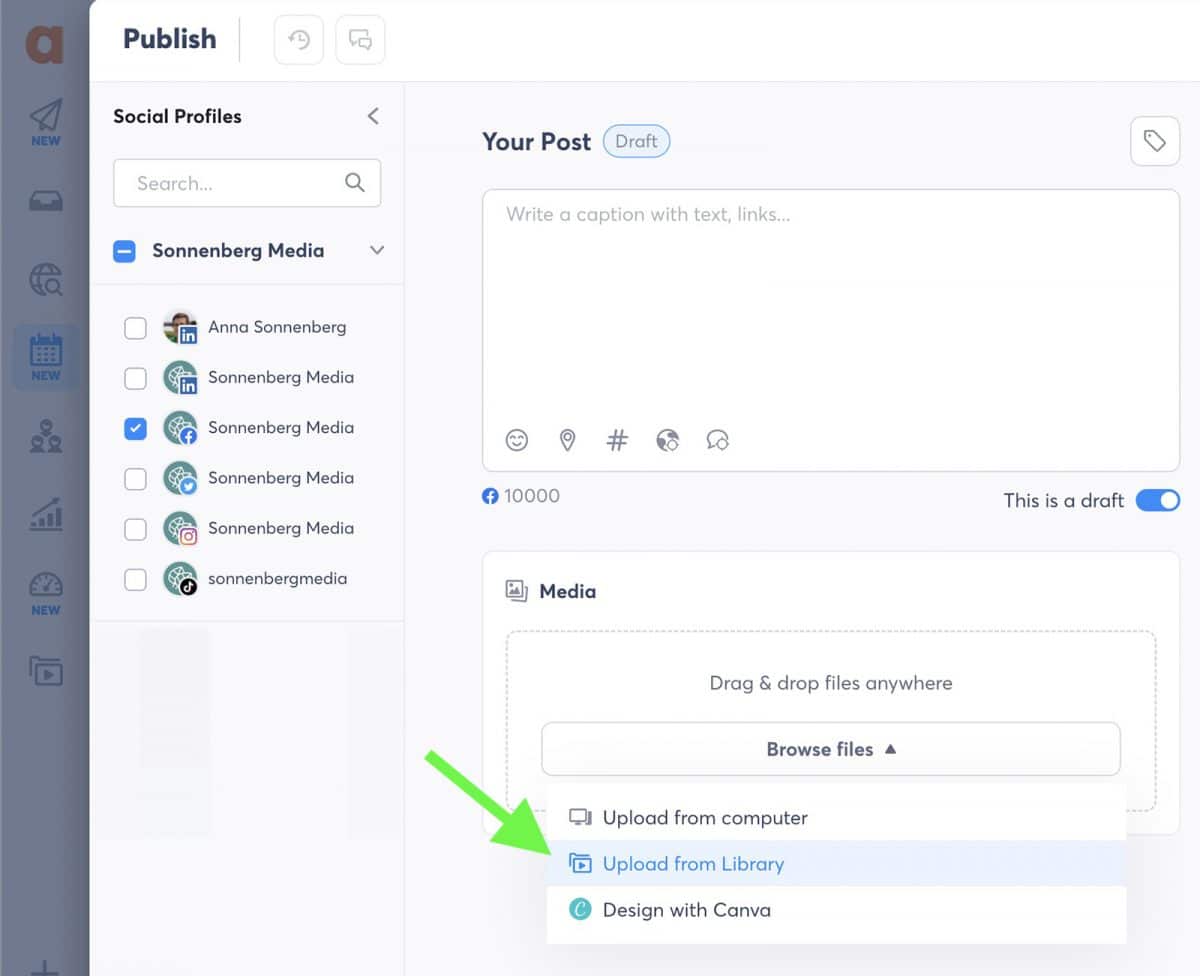
Upload assets easily
You can also add creatives to social media posts directly from the asset library. If you’re already in the Agorapulse publishing composer, you can opt to add a creative from your asset library. You can also use the filters, search bar, and tags to find the creative you need.
If you’re in the asset library, open the creative you want to use and click Publish this asset. Agorapulse automatically generates a new post in the publishing composer where you can add a caption and choose a time to post.
4. Repurpose content across platforms
If you manage more than one social media channel for your company or clients, there’s a good chance you’ll want to cross-post content or repurpose creatives across channels. Managing these processes manually can take a ton of time.
But with the right tools, you can repurpose content more efficiently.
With Agorapulse, it’s easy to cross-post creatives across multiple social profiles. From your Agorapulse dashboard, click the paper airplane icon in the upper left to the publishing composer. Then select all the social profiles where you want to publish, creating a consistent social media posting workflow.
From TikTok and Instagram to Twitter and LinkedIn, you’re able to share the same content to all supported channels simultaneously. Although your posts can look the same on every channel, they don’t necessarily have to appear identical.
Once you upload a creative, it’s easy to edit the caption for each channel individually. You can click the pencil icon next to any social profile preview to edit directly. And if you’re waiting for a team member to edit the caption, save the post as a draft rather than scheduling it.
Once you’ve drafted or scheduled a post in the publishing composer, you can always go back and add it to other social profiles. It’s as easy as duplicating the original post and selecting the new social profiles to add.
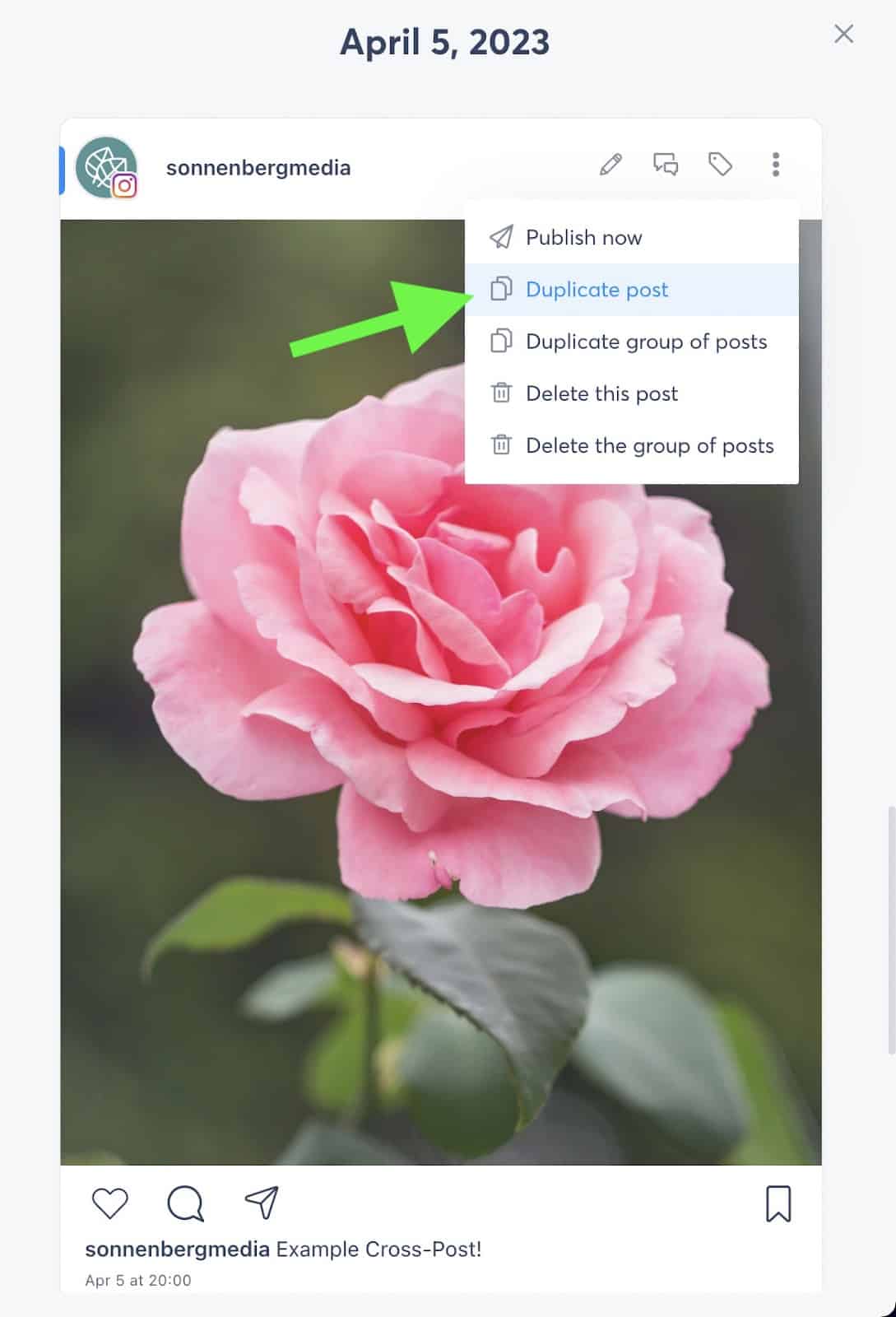
Duplicate post helps you save time and make copies.
You can also adjust certain channel settings from the publishing composer. For example, publish Instagram Reels via a mobile notification so you can add transitions, effects, and audio directly in the Instagram app.
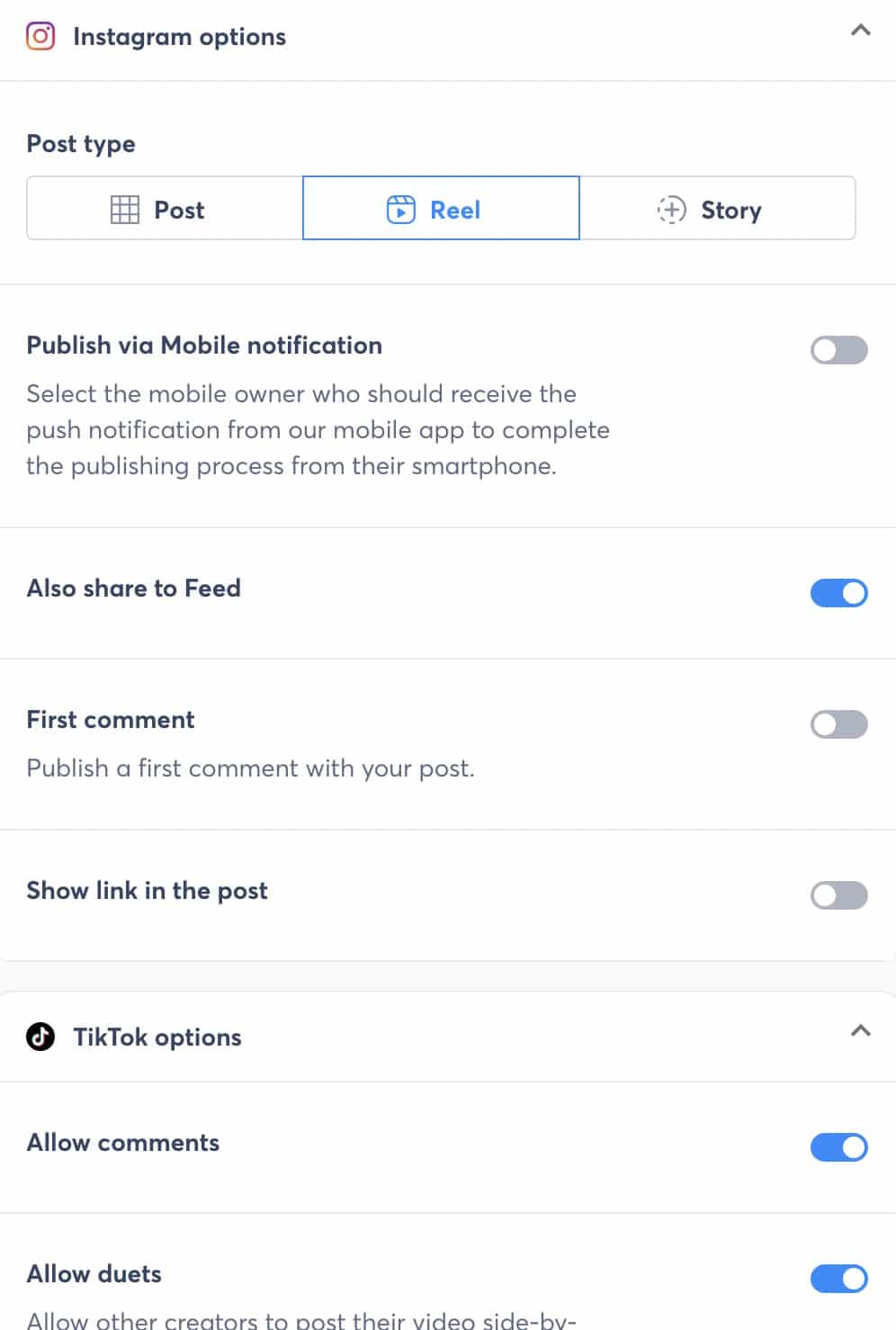
Instagram options for your Reels.
In some cases, the same image will work across channels. But when you need to set different aspect ratios for certain channels, Agorapulse’s image editor is easy to use for these last-minute changes. Just click to edit any image, select a preset aspect ratio, or resize the image manually.
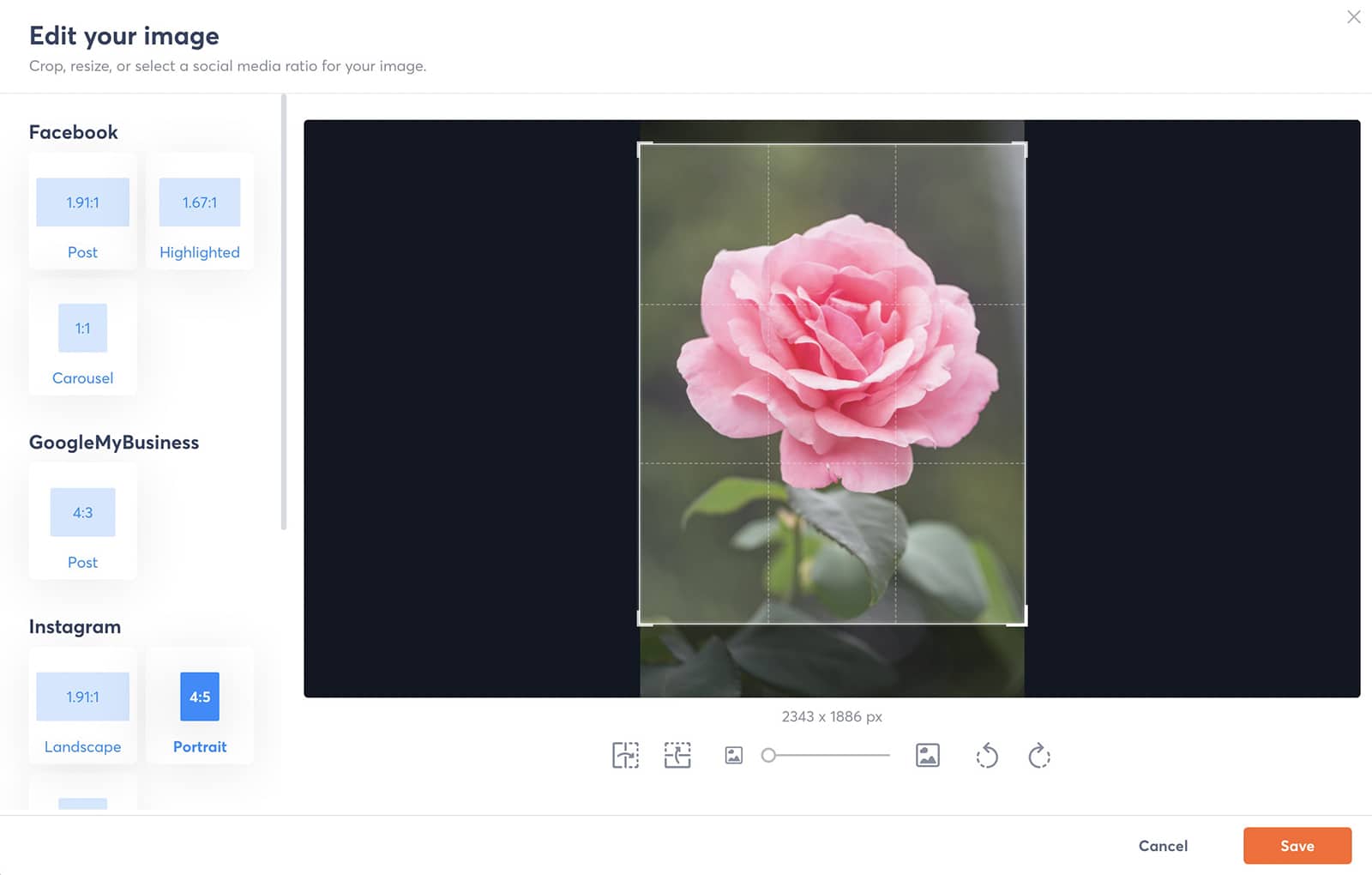
Change the sizes of your posts based on social media platform recommended sizes.
5. Collect user-generated content (UGC)
Even if you post a lot of branded content for your company or clients, UGC can add an authentic touch to your social profiles.
Sourcing UGC manually can be time-consuming, but with Agorapulse, you can find content quickly.
Agorapulse automatically collects linked accounts’ mentions in your listening inbox. Every time a customer or follower tags your brand on Instagram or YouTube or mentions your business on Facebook or Twitter, you can review and respond from here.
Aside from retweets, APIs prevent sharing most UGC directly from Agorapulse. However, labeling UGC or high-profile mentions is great for flagging content you want to highlight. After clicking to add a label to these listening inbox items, you can find them quickly later—so then you can add them to your content calendar.
6. Curate content to share
To appeal to your customers’ interests, it’s often a good idea to share content from relevant thought leaders, brands, and publishers as well. Like UGC, Agorapulse makes curating content seamless.
Use Agorapulse’s social listening tools to set up searches for Instagram, Twitter, and YouTube profiles. For example, you can create searches for keywords, hashtags, and usernames that relate to your clients and their industries.
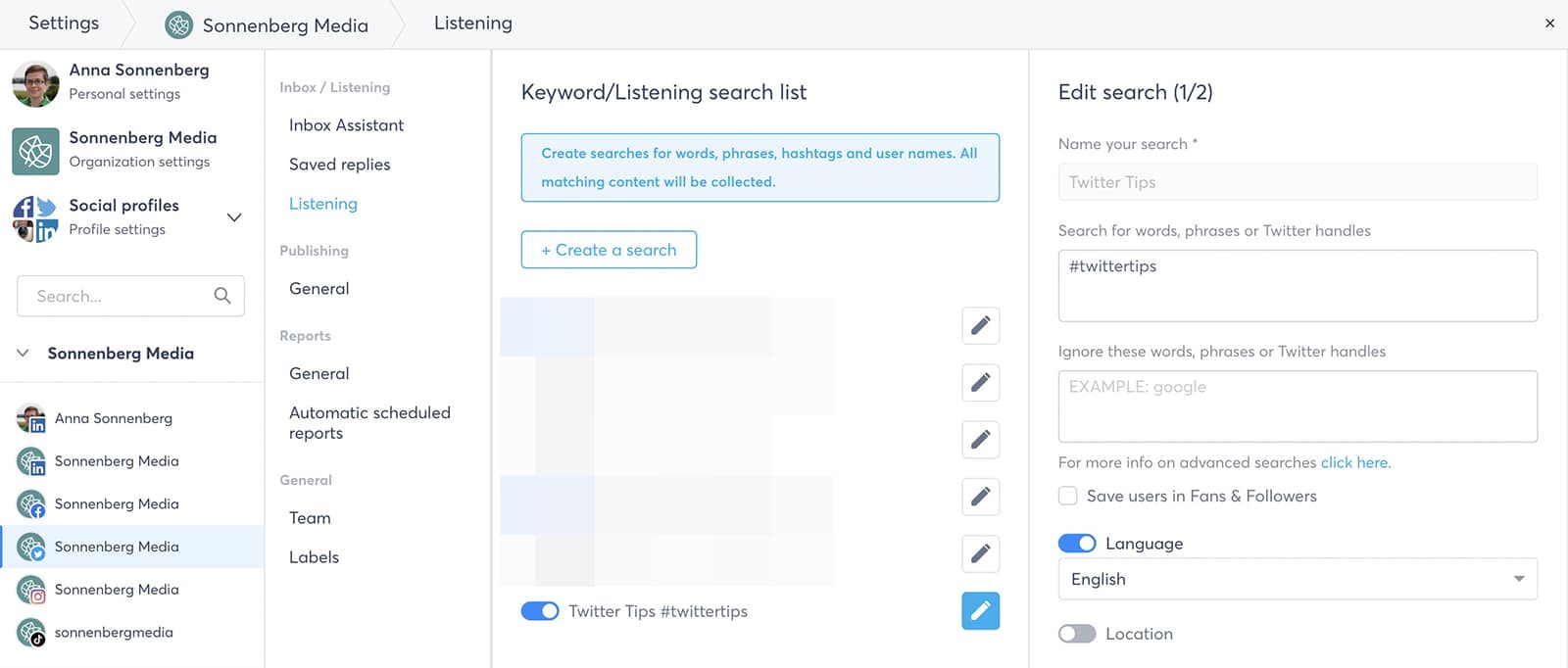
Use Agorapulse’s keyword/listening tools to keep your ear to the social media door.
A few times each week, you can set aside an hour or two to sort through your listening inbox to locate relevant content to share with your clients’ social profiles. Since you can click to open any tweet, YouTube video, or Instagram post directly from Agorapulse, you can grab a sharable link and add it to a new post or note.
7. Develop and reuse hashtag groups
If you use hashtags to improve reach and visibility, you know how helpful they can be for platforms like Instagram, Twitter, and YouTube. Yet you also know that keeping track of them and finding the best ones to use can be incredibly time-consuming.
To streamline hashtag research and storage, I use two Agorapulse tools. In the publishing composer, I use hashtag groups to keep track of the keywords I frequently add to posts. To access it, click the hashtag icon, create a new group, and then click to add the hashtags to any post.
To see which hashtags are working best, use Agorapulse reports. The reporting dashboard tracks all the hashtags you use in Instagram and Twitter content—including the number of uses and the number of interactions. Sort by average interactions and then add the top-performing hashtags to saved groups.

Track your hashtags and interactions with Agorapulse’s tool.
8. Follow a content approval workflow
Getting clients and colleagues to sign off on content can be tricky, especially if you jump between multiple platforms for creating and approving social media posts. But if you use Agorapulse for social media management, you can draft posts and get approval using a single platform.
After creating a post, click the Assign to button to send it to one or more people who need to approve it. Since you can choose from internal or external users and select multiple people, you can easily incorporate your team’s social media approval workflow.

Assign tasks to people, and leave a note!
If you plan to send content to external users for approval, note that you’ll need to set up a shared calendar in Agorapulse first. When you set up a shared calendar, you’ll add all the profiles you want users to be able to view. Then they’ll be able to see all published, drafted, and scheduled content—and approve posts as necessary.
When assigning posts to colleagues or clients, you typically use the option that requires everyone to approve. Since everyone assigned can view the comment thread and editing history for a post, it’s easier to keep your team on the same page—so you can get approvals and publish content on time.
9. Monitor social media engagement
Reviewing engagement and mentions is a critical part of your social media management workflow. But tackling these tasks with a team can lead to a lot of wasted time and missed opportunities.
To ensure your team never misses a comment or message, use Agorapulse’s social inbox. With a unified social inbox, you can easily review engagement from each profile and respond directly from the Agorapulse dashboard.
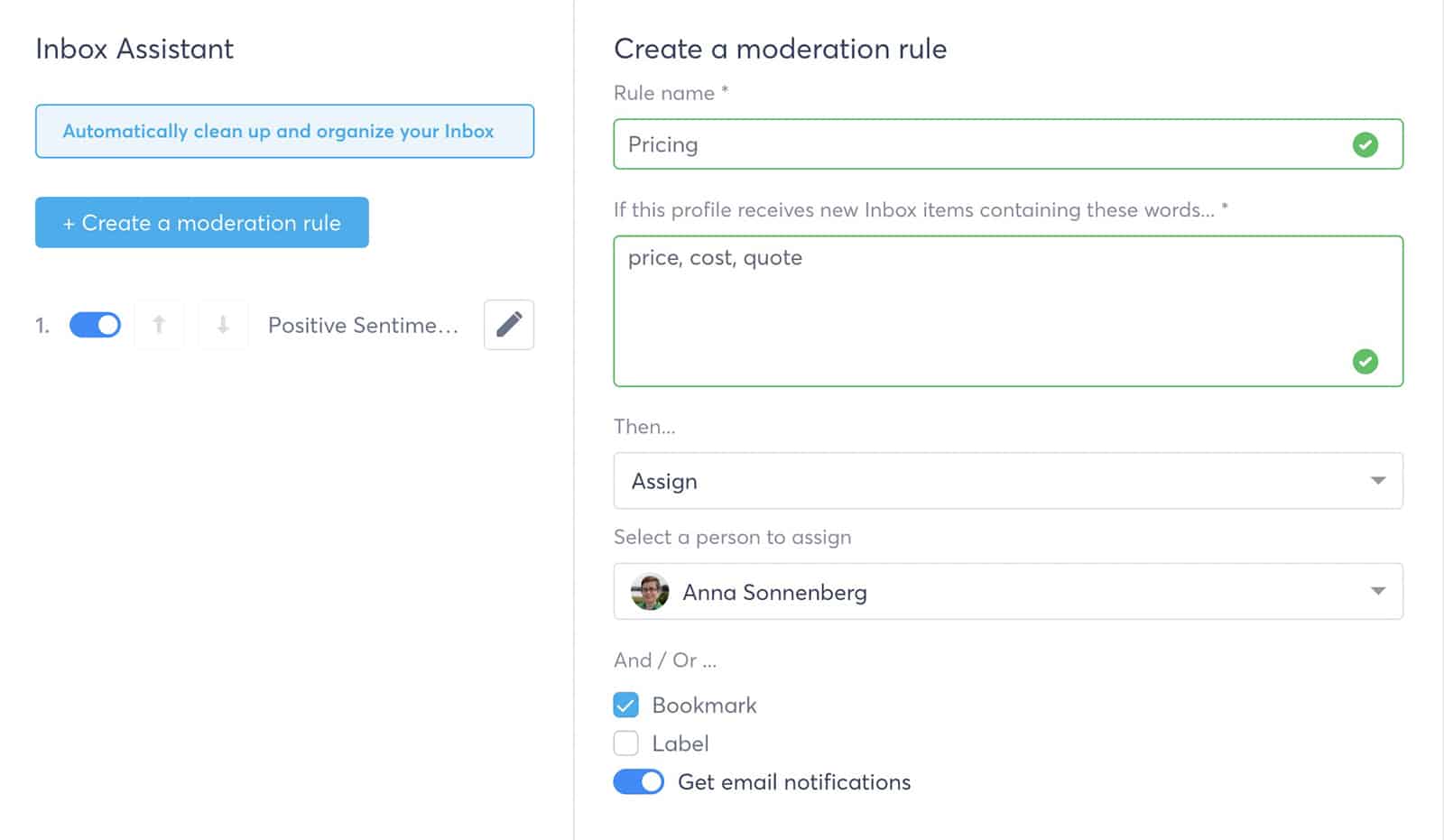
Agorapulse’s moderation rules help hide spam or make comments more visible.
To improve response times for social media engagement, use Agorapulse’s moderation rules. For example, you can automatically hide spammy comments or bookmark questions for follow-up. You can also label engagement so you can assess sentiment efficiently.
With Agorapulse’s saved replies, you can respond to engagement faster—especially when the profiles managed receive a lot of similar questions and comments. You can also assign inbox items that need more in-depth review to colleagues or clients.
Use saved replies and assignment tools to process brand mentions quickly too. By adding sentiment labels to mentions, you can also do basic brand monitoring from your Agorapulse listening dashboard.
10. Analyze social media insights
Analyzing social media metrics is essential for checking progress, creating better content, and improving performance. But reporting isn’t easy if you have to pull data for multiple channels or profiles manually.
To create social media reports efficiently, use the Agorapulse reporting dashboard. It automatically imports data from connected profiles and displays metrics in a format that clients and colleagues can easily understand.

Watch engagement and interactions in Agorapulse.
Take advantage of Agorapulse’s report scheduling tool to send weekly or monthly summaries to clients and team members. Since you can choose the profiles, campaigns, and modules that appear in each report, you can make sure everyone gets the report they need.
Reporting on return on investment (ROI) can be tricky for social media managers, but Agorapulse’s ROI dashboard streamlines the process. It automatically tracks visitors, transactions, and revenue related to social media posts so you can demonstrate the value of efforts.
Since the ROI dashboard also breaks down results by campaign, channel, and landing page, your team can see what drives the best results. Then we can use our findings to develop even more successful campaigns.
Wrapping Up What We Learned About Building a Social Media Workflow
Managing social media with a team or agency doesn’t have to be as difficult as it might seem. With a time-saving workflow, you can juggle your to-do list effectively while you make strides toward key marketing goals.




